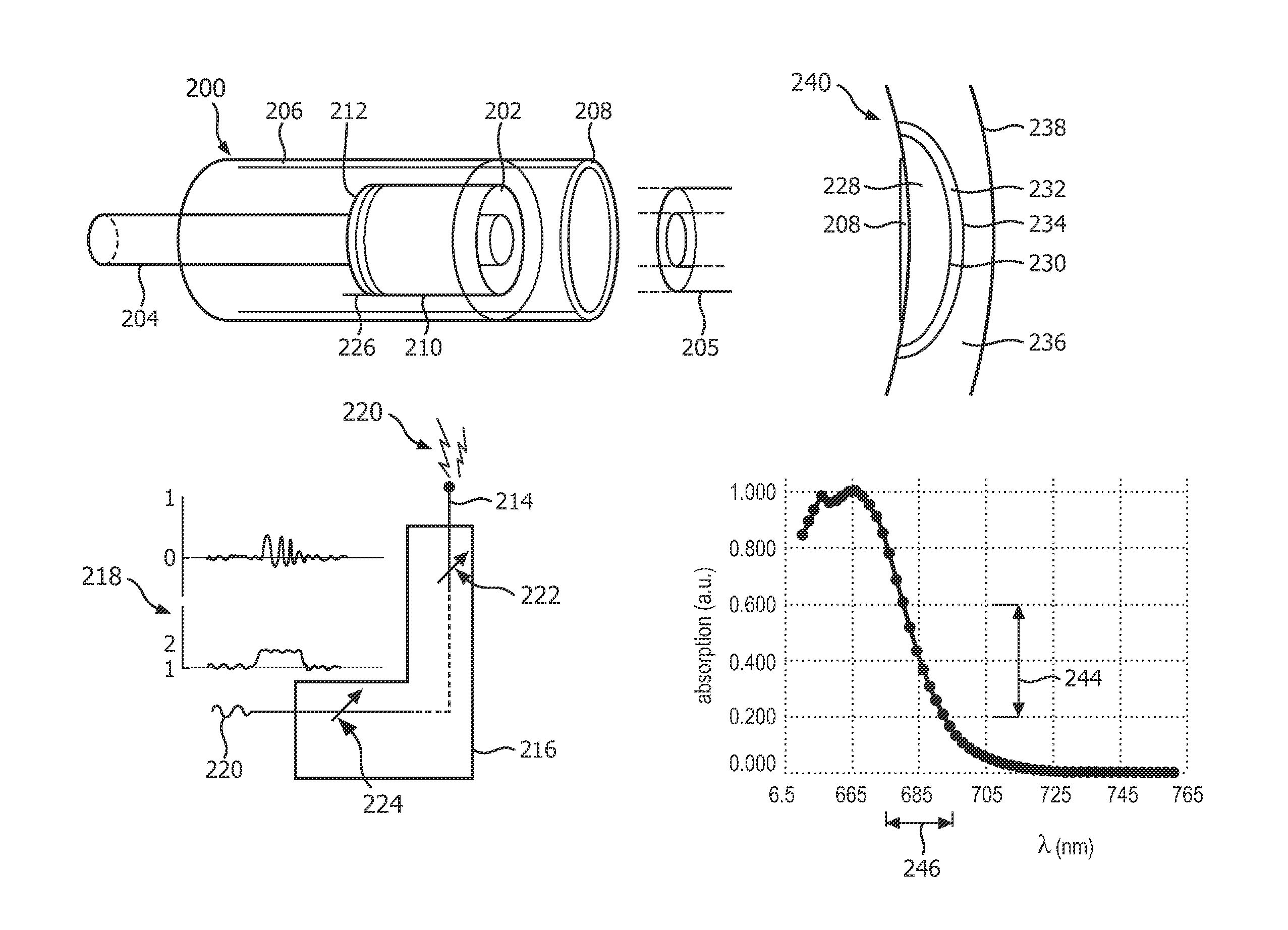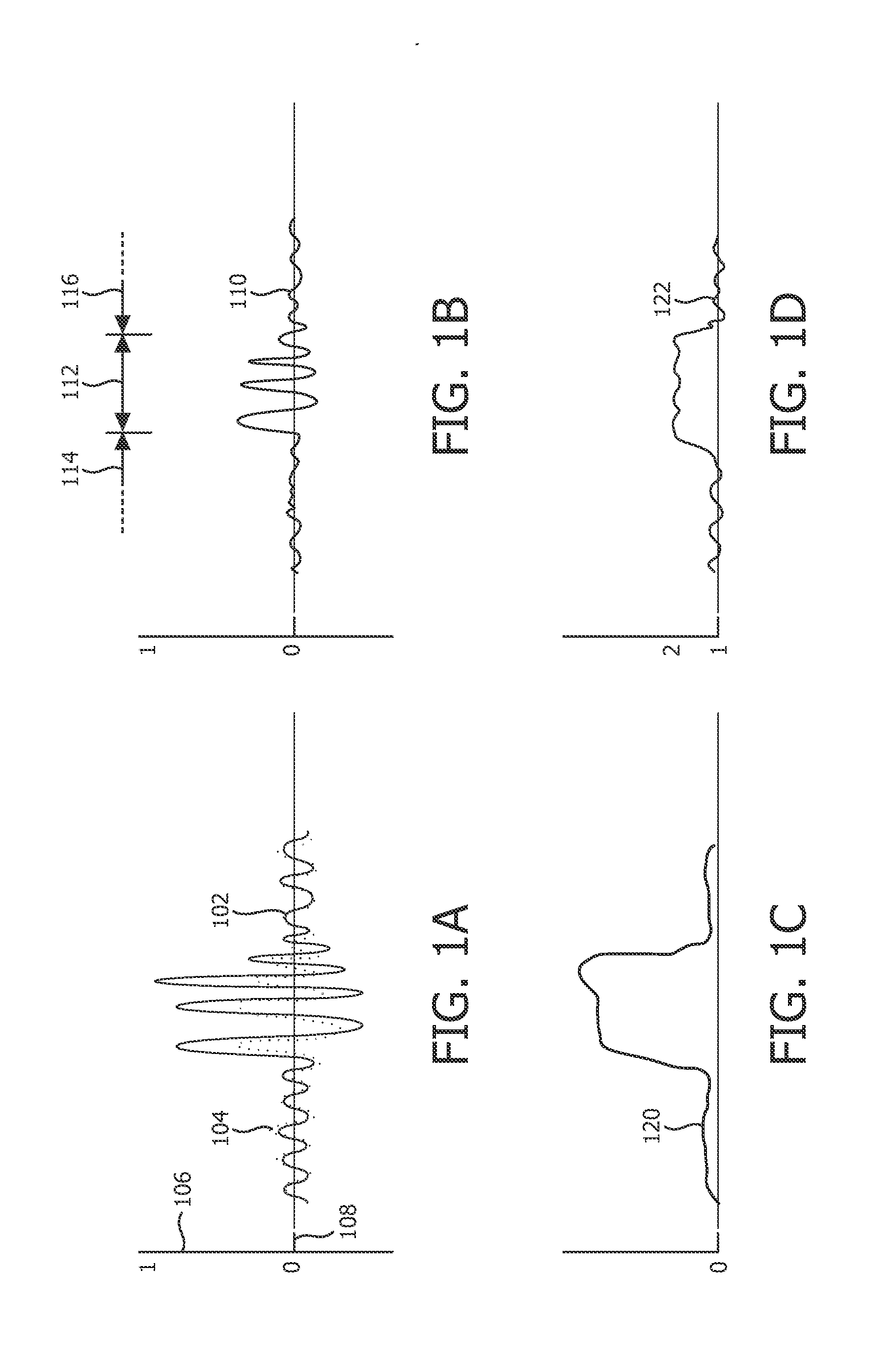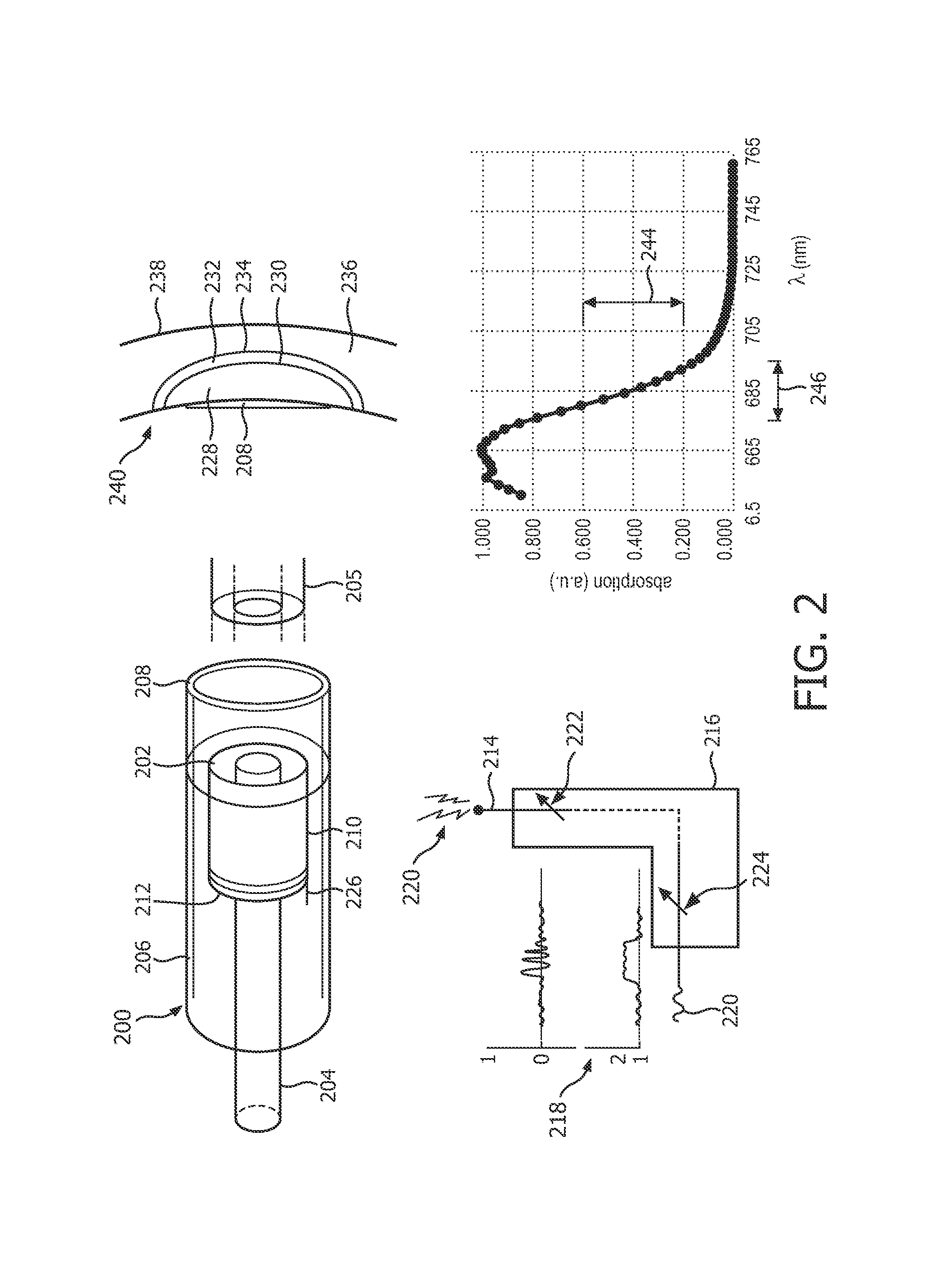Functional-imaging-based ablation monitoring
a technology of ablation monitoring and functional imaging, applied in the field of functional imaging-based ablation monitoring, can solve the problems of serious consequences for patients, under- or overheating of the site, and tissue is not sufficiently coagulated, and achieve the effect of improving data magnitud
- Summary
- Abstract
- Description
- Claims
- Application Information
AI Technical Summary
Benefits of technology
Problems solved by technology
Method used
Image
Examples
Embodiment Construction
[0033]FIG. 1A depicts, approximately and for illustration purposes, two time waveforms, specifically RF waveforms, corresponding to photoacoustic absorption by biological tissue irradiated at two respective frequencies. The first waveform 102, generated by a first frequency of irradiation, or equivalently “wavelength”, is shown as a solid line or curve. The second waveform 104 for a second wavelength is shown as a dotted curve. A vertical scale 106 represents the amplitude of an acoustic wave. A horizontal scale 108 indicates time. With a single flash of a light source, a laser or near-infrared light-emitting diode (LED) for example, the light, as it propagates through biological tissue will in part be absorbed, may in part be reflected and may in part pass through. The absorbed energy causes heating, expansion, and, in response, an acoustic wave which can be detected and measured. Tissue with higher light absorption has an acoustic response of greater absolute magnitude. Tissue wit...
PUM
 Login to View More
Login to View More Abstract
Description
Claims
Application Information
 Login to View More
Login to View More - R&D
- Intellectual Property
- Life Sciences
- Materials
- Tech Scout
- Unparalleled Data Quality
- Higher Quality Content
- 60% Fewer Hallucinations
Browse by: Latest US Patents, China's latest patents, Technical Efficacy Thesaurus, Application Domain, Technology Topic, Popular Technical Reports.
© 2025 PatSnap. All rights reserved.Legal|Privacy policy|Modern Slavery Act Transparency Statement|Sitemap|About US| Contact US: help@patsnap.com



